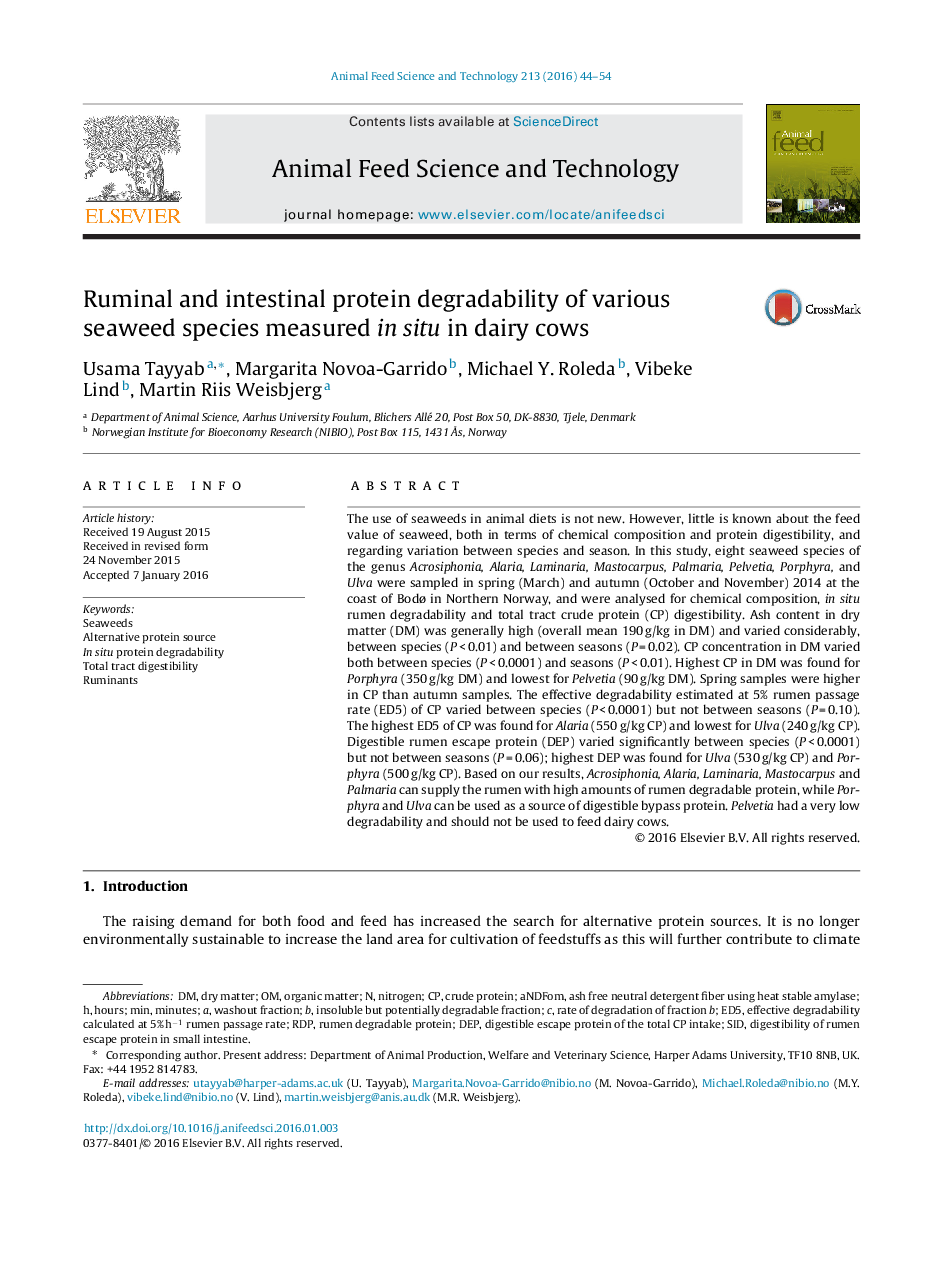| کد مقاله | کد نشریه | سال انتشار | مقاله انگلیسی | نسخه تمام متن |
|---|---|---|---|---|
| 2419348 | 1552372 | 2016 | 11 صفحه PDF | دانلود رایگان |
• We investigated the protein value of 8 different seaweed species in dairy cows.
• The seaweeds collected in spring had higher nutritive and protein values as compared to autumn samples.
• Porphyra and Ulva can supply a high amount of digestible protein to the small intestine.
• Acrosiphonia, Alaria and Laminaria can supply high rumen degradable protein.
• Mastocarpus and Palmaria both can supply equal amounts of protein to the rumen and intestine.
The use of seaweeds in animal diets is not new. However, little is known about the feed value of seaweed, both in terms of chemical composition and protein digestibility, and regarding variation between species and season. In this study, eight seaweed species of the genus Acrosiphonia, Alaria, Laminaria, Mastocarpus, Palmaria, Pelvetia, Porphyra, and Ulva were sampled in spring (March) and autumn (October and November) 2014 at the coast of Bodø in Northern Norway, and were analysed for chemical composition, in situ rumen degradability and total tract crude protein (CP) digestibility. Ash content in dry matter (DM) was generally high (overall mean 190 g/kg in DM) and varied considerably, between species (P < 0.01) and between seasons (P = 0.02). CP concentration in DM varied both between species (P < 0.0001) and seasons (P < 0.01). Highest CP in DM was found for Porphyra (350 g/kg DM) and lowest for Pelvetia (90 g/kg DM). Spring samples were higher in CP than autumn samples. The effective degradability estimated at 5% rumen passage rate (ED5) of CP varied between species (P < 0.0001) but not between seasons (P = 0.10). The highest ED5 of CP was found for Alaria (550 g/kg CP) and lowest for Ulva (240 g/kg CP). Digestible rumen escape protein (DEP) varied significantly between species (P < 0.0001) but not between seasons (P = 0.06); highest DEP was found for Ulva (530 g/kg CP) and Porphyra (500 g/kg CP). Based on our results, Acrosiphonia, Alaria, Laminaria, Mastocarpus and Palmaria can supply the rumen with high amounts of rumen degradable protein, while Porphyra and Ulva can be used as a source of digestible bypass protein. Pelvetia had a very low degradability and should not be used to feed dairy cows.
Journal: Animal Feed Science and Technology - Volume 213, March 2016, Pages 44–54
